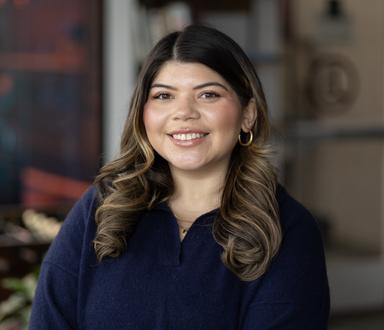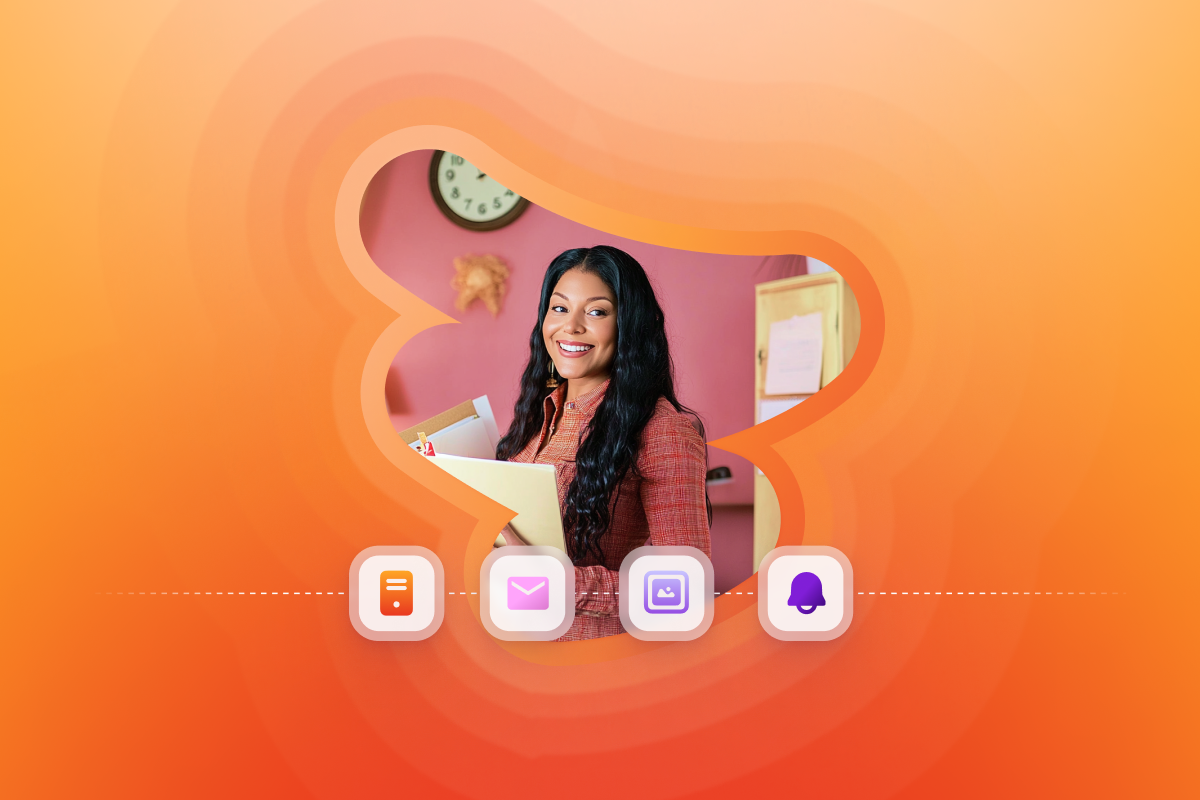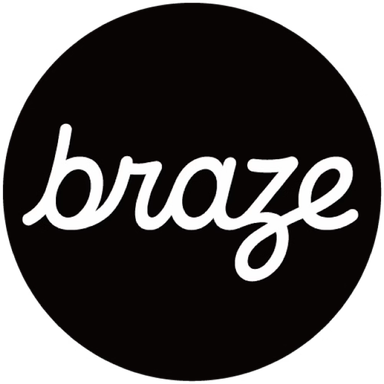How Building the Braze Free Trial Unlocked Cross-Team Collaboration
Published on January 10, 2025/Last edited on January 10, 2025/10 min read

Ting Tsai
Lead Product ManagerWhen evaluating a new technology, nothing compares to hands-on experience. For prospective customers, the ability to explore a product’s features firsthand can help demystify complex capabilities and accelerate decision-making. Recognizing this, Braze set out to build a streamlined, accessible way for organizations to experience the power of its customer engagement platform—a 14-day free trial.

But while the free trial offers prospective users hands-on access to the Braze platform, that’s just part of the full experience. The trial also includes guided product tours, pre-built campaign templates, and demo data designed to help users quickly understand and experience its capabilities. These features allow prospects to explore core functionality, send test emails, build out user journeys with Canvas, and see firsthand how Braze can transform their customer engagement efforts.
This initiative required close collaboration between the Braze Product, Product Design, Engineering, Growth (including Growth Engineering), Marketing (including Demand Generation, Lifecycle, Marketing Operations, and Product Marketing), Go to Market Enablement and Productivity, and Sales teams to create an experience that balanced usability with our strategic goals. By addressing evolving customer needs and operational inefficiencies, the free trial highlighted our company’s ability to innovate while fostering deeper teamwork across departments.
The free trial project journey
Investigating options
At the start of the project, Braze brought together teams from Product, Growth Engineering, and Marketing to evaluate potential approaches. Initial discussions considered several options, including workshops with controlled trial access and limited sandbox environments.
Ultimately, the team prioritized creating a free trial experience that could showcase the Braze platform’s usability across different aspects of the product. This collaborative exploration phase laid the foundation for the free trial strategy, aligning technical feasibility with customer needs.
Determining free trial strategy
Once the decision was made to move forward with launching a free trial offering that could be accessed through the Braze website, the Product team made a point of looping in additional stakeholders from the Sales and Marketing side of the business, including representatives of our Demand Generation, Lifecycle, and Web teams. That allowed us to put in place the right infrastructure and messaging expertise needed to successfully drive people into and through the free trial experience.
During this stage of the process, we worked through a number of complex steps, including:
- Mapping out the desired user flow: To chart the best-case flow that users would follow from sign-up all the way through post-trial messaging campaigns, stakeholders had to work together across teams to map out different potential flows that could be triggered based on how much a given user engaged with the free trial experience and whether or not their proactively engaged with our Sales team.
- Identifying template- and tour-related needs: Because we’d decided to supplement a traditional free-trial with additional demo and guided experiences, stakeholders needed to identify and select which specific industries, Braze features, and use cases to showcase in the templates and tours that were created in connection with the free trial.
While there were pros and cons to all the approaches we considered, the direction we decided on was selected in part because it made it possible to showcase the power of the platform without overwhelming users. By combining pre-built campaigns and in-product tours with the traditional free trial experience, our approach made it possible for prospects to quickly grasp how Braze could transform their customer engagement strategies while maintaining a manageable scope for the trial experience.
Building the free trial experience
Developing the free trial required collaboration across teams in order to create a seamless and secure experience.
The Engineering team took the lead on developing key elements supporting the free trial experience, including creation of a secure login with two-factor authentication, activation, verification, and demo environment provisioning. In turn, the Product Design team worked to ensure that the interface was intuitive and easy to navigate. The Growth Engineering team built out content within the demo space and the Growth team preloaded the free trial experience with realistic data, allowing it to simulate real-world usage and providing immediate value for prospective customers looking to better understand how they might make use of the Braze platform.
Product and Marketing teams aligned around the messaging and educational aspects of the Braze free trial experience, then worked together to craft onboarding workflows that guided users through the trial, enabling them to explore key features without requiring extensive setup or support. In concert, these departments worked together to create automated emails to keep users informed during account activation, when a given trial ended, and other key moments in the process.
Our Security team collaborated with other stakeholders to build out a registration flow for the free trial experience, ensuring that there was a secure login that protected the larger Braze platform while gathering required information (e.g. user email, company size, etc.).
Across departments, teams worked together to implement any required limits on product access in order to open up access to the public while limiting security risks. For features that were limited within the free trial experience, Growth, Product, and Marketing collaborated to build out landing pages that provided additional detail on how they could be used in the full version of Braze, giving prospective customers key context.
Feedback and iteration
Before opening up the free trial experience to all comers, Braze tested it during a closed beta with a select group of prospects, customers, and Braze Sales team members to gather actionable feedback. This iterative process uncovered opportunities to refine the trial in ways that supported a better user experience and an improved sales process, including simplifying the steps involved in free trial onboarding and expanding the number of available features.
To ensure that Braze was able to act on these and future insights in a timely manner, we held regular cross-functional syncs and built out an ongoing, data-driven feedback loop that allowed us to deliver meaningful improvements to the user experience in an iterative way:
- Data collected on free trial usage and message engagement was surfaced to the cross-functional free trial team, allowing different organizations to iterate and optimize their specific portions of the overall user experience.
- The Demand Generation team carried out experiments related to messaging and other activities to more effectively encourage prospective users to the free trial registration page.
- Once users had begun their free trial, technical stakeholders worked to optimize free trial dashboard features, guides, and user experience (UX) in order to maximize value for prospects once they were in the Braze dashboard.
- Sales used quantitative and qualitative data related to free trial usage to assess what areas of the product-specific prospects were focused on, allowing them to proactively speak to key subject areas and provide guidance on how to address essential customer engagement needs.
“To make this kind of optimization work possible, we had to break down data silos across Marketing, Growth, and Product in ways that weren’t necessary in a pre-free trial world,” said David Willis, Senior Director, Data Analytics & Growth Engineering at Braze. “But the benefits have been significant—we’re seeing our teams easily accessing insights, data, and product levers in ways that would have been hard to imagine before.”
By supporting the creation of this ongoing inter-team feedback loop, the project’s stakeholders unlocked new possibilities for collaboration while also allowing Braze to deliver a polished and impactful free trial at launch.
Going to market

The free trial’s public launch at our annual customer conference, Forge, marked the culmination of months of collaboration. The go-to-market strategy, developed through close collaboration between the Sales and Marketing teams, included targeted email campaigns, in-product messaging, and robust enablement materials for Sales. This approach supported prospects throughout their journey, making the launch a success for both users and internal teams.
Learnings from the free trial project
The free trial project was more than just a product launch—it was a transformative effort that highlights how Braze collaborates, iterates, and delivers value to its customers. By bringing together diverse teams and tackling complex challenges, Braze uncovered lessons that will continue to inform its approach to innovation and customer engagement.
- Collaboration drives success: Teams across Product, Engineering, Marketing, Growth, and Sales broke down silos to solve complex challenges. “It prompted a level of collaboration we hadn’t seen before,” noted Spencer Burke, SVP of Growth at Braze. The free trial project supported a more unified, data-driven strategy, allowing prospective customers to receive messaging and free trial experiences customized to their specific industry and needs.
- Iteration unlocks value: A closed beta phase allowed Braze to test, learn, and refine the free trial experience, helping us validate the experience and drive quick wins for the Sales team and beyond. Feedback led to meaningful adjustments, including simplified onboarding and expanded feature availability. This iterative approach reinforced the importance of building flexibility into our initiatives—and we’re taking that lesson and using it to continue iterating on the free trial experience as more prospects take advantage of it.
- Balancing user needs and internal goals: The project required careful consideration to balance customer demands for a hands-on experience with our company’s internal needs, like maintaining platform security. The trial was designed to highlight core capabilities while aligning with strategic business objectives.
- Setting a foundation for future initiatives: The success of the free trial created a blueprint for future product-led growth (PLG) efforts. By embracing a customer-centric mindset and operationalizing these lessons, Braze established a replicable framework for similar projects. Spencer Burke, SVP of Growth at Braze explained that the trial was “not just a product launch but a cultural shift.”
Conclusion
The free trial project represents an important moment for Braze, showcasing what’s possible when diverse teams unite to meet evolving market demands. By creating a hands-on way for prospects to explore the platform, Braze has enhanced its sales process and laid the foundation for future innovations.
This initiative wasn’t just about offering a new feature—it redefined how Braze collaborates internally and engages with its customers. The lessons learned will continue to guide our collaborative work going forward, helping Braze remain at the forefront of customer engagement while delivering value from the very first interaction.
Why just read about it when you can try it for yourself? Explore our 14-day free trial today.
Forward Looking Statements
This blog post contains “forward-looking statements” within the meaning of the “safe harbor” provisions of the Private Securities Litigation Reform Act of 1995, including but not limited to, statements regarding the performance of and expected benefits from Braze and its products and programs, including its free trial program. These forward-looking statements are based on the current assumptions, expectations and beliefs of Braze, and are subject to substantial risks, uncertainties and changes in circumstances that may cause actual results, performance or achievements to be materially different from any future results, performance or achievements expressed or implied by the forward-looking statements. Further information on potential factors that could affect Braze results are included in the Braze Quarterly Report on Form 10-Q for the fiscal quarter ended October 31, 2024, filed with the U.S. Securities and Exchange Commission on December 10, 2024, and the other public filings of Braze with the U.S. Securities and Exchange Commission. The forward-looking statements included in this blog post represent the views of Braze only as of the date of this blog post, and Braze assumes no obligation, and does not intend to update these forward-looking statements, except as required by law.
Related Tags
Releated Content
View the Blog
February 2025 Bonfire Marketer of the Month: SkyShowtime’s Inês Pais

Emily Calderon

Deliverability Indicators: Email Opens

Alison Gootee

Marketing Automation: What Is it and Why Is it Important to Your Marketing Strategy?
